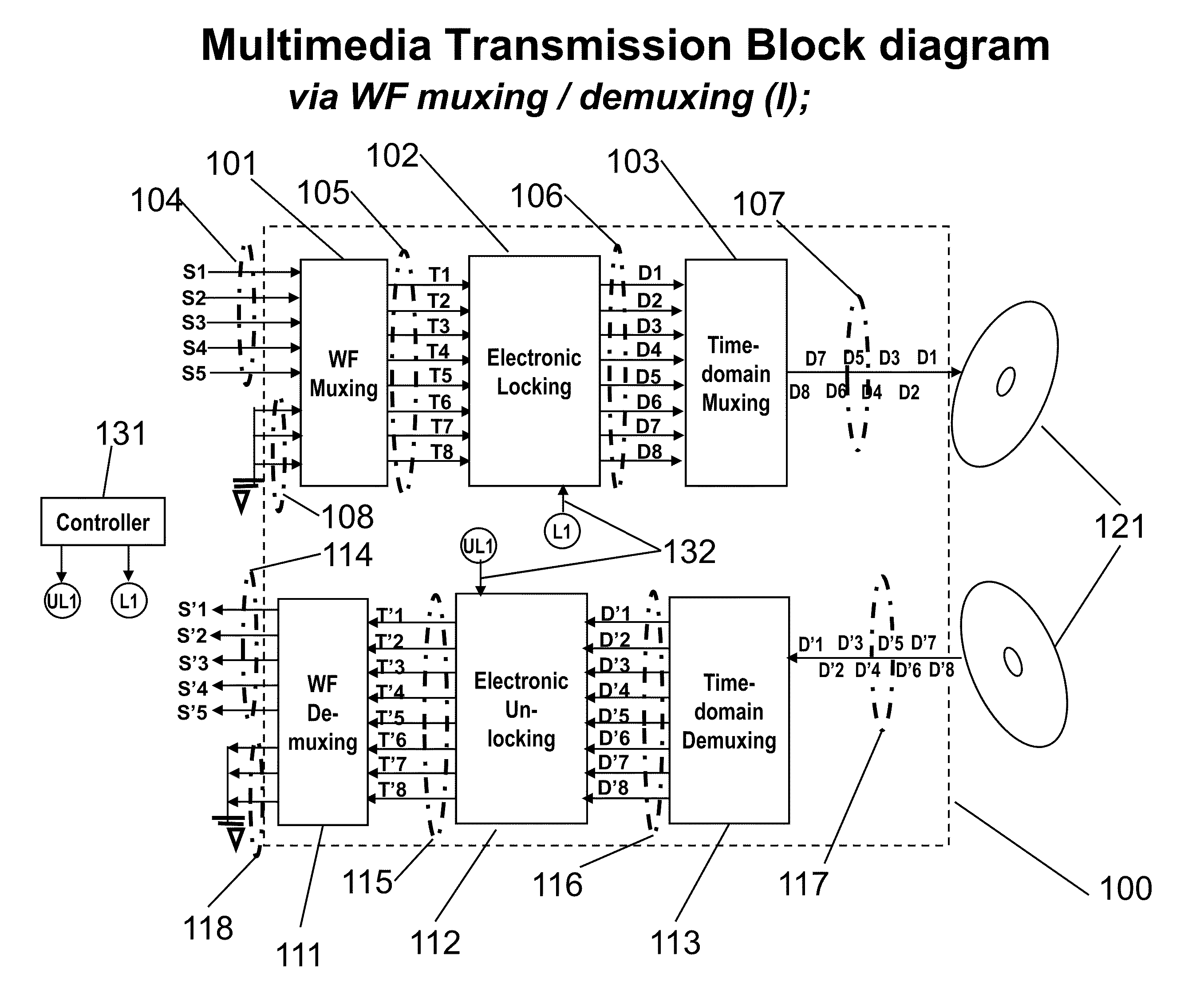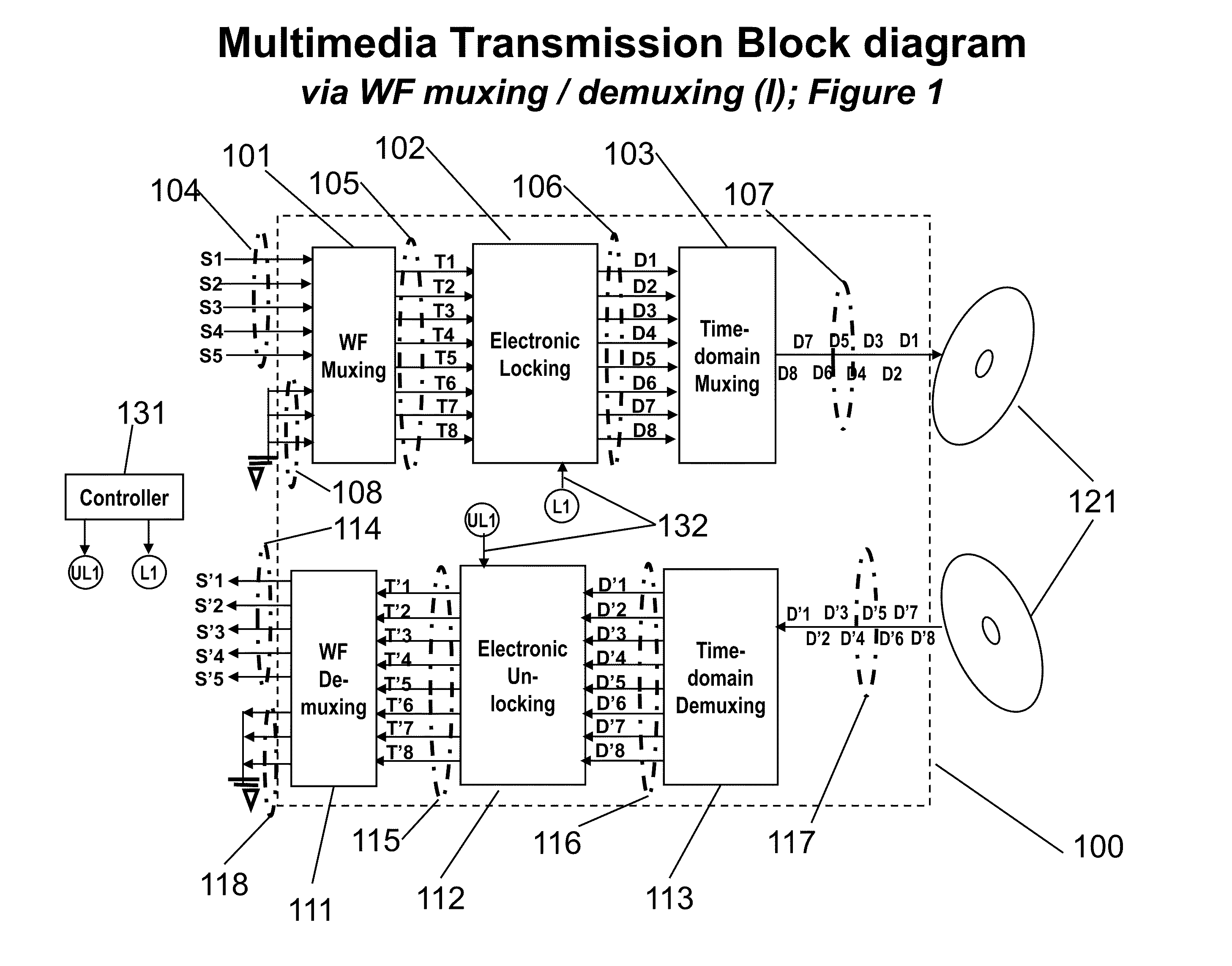Novel Karaoke and Multi-Channel Data Recording / Transmission Techniques via Wavefront Multiplexing and Demultiplexing
a multi-channel data and wavefront technology, applied in the field of new karaoke and multi-channel data recording/transmission techniques, can solve the problem that the artist vocal cannot be separated from the accompanying stereo music, and achieve the effect of enhancing or illuminating the artist vocal without altering the quality of the accompanying music, saving bandwidth, and enhancing the security and integrity of recorded data
- Summary
- Abstract
- Description
- Claims
- Application Information
AI Technical Summary
Benefits of technology
Problems solved by technology
Method used
Image
Examples
Embodiment Construction
[0038]The present invention provides advanced channel signal storage, delivery, and retrieving systems that are capable of providing data security, detecting data contaminations, and authenticating received data. In the detailed description that follows, like element numerals are used to indicate like elements appearing in one or more of the figures.
[0039]FIG. 1 illustrates a block diagram for (1) recording multi-channels data streams on a portable storage device via WF muxing process, (2) retrieving the recorded data from the portable device via WF de-muxing processing, and (3) portable storage devices. The recorded data are encrypted and converted to a single track for recording. We will use audio recording of multiple songs as an example. The same techniques are applicable to recording multi channel video data or multi-media data in general.
[0040]The data storage and retrieving system (100) consists of data recording and data retrieving functions. In the data recording, there are...
PUM
 Login to View More
Login to View More Abstract
Description
Claims
Application Information
 Login to View More
Login to View More - R&D
- Intellectual Property
- Life Sciences
- Materials
- Tech Scout
- Unparalleled Data Quality
- Higher Quality Content
- 60% Fewer Hallucinations
Browse by: Latest US Patents, China's latest patents, Technical Efficacy Thesaurus, Application Domain, Technology Topic, Popular Technical Reports.
© 2025 PatSnap. All rights reserved.Legal|Privacy policy|Modern Slavery Act Transparency Statement|Sitemap|About US| Contact US: help@patsnap.com



